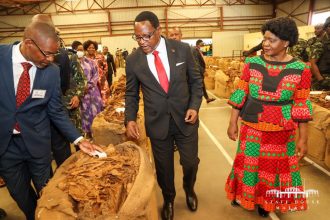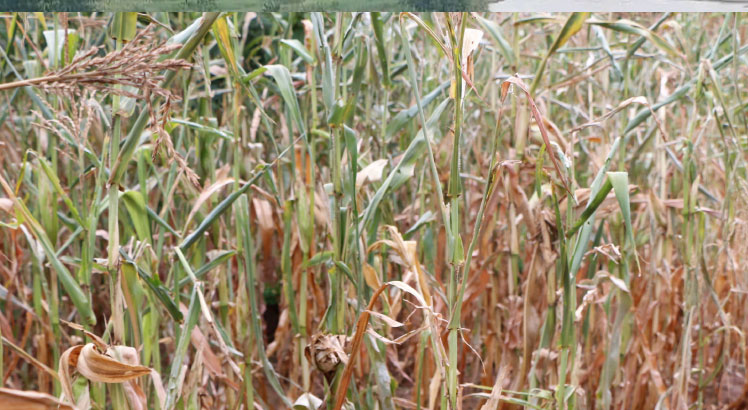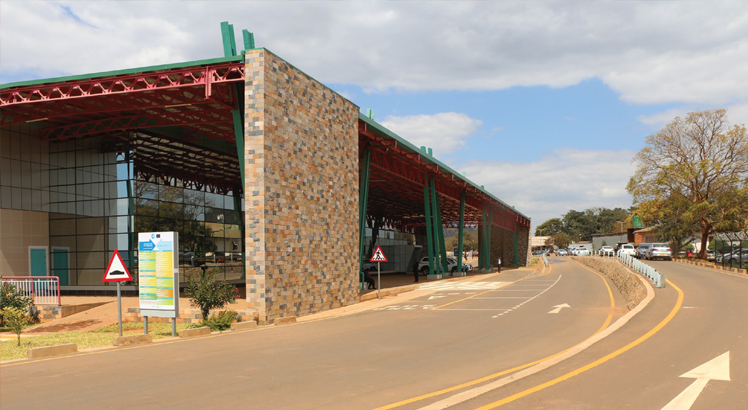Malawi trade deficit raises to K110bn in Q1

Malawi 2013 First Quarter (Q1) trade deficit rose to about K110 billion from K109.2 billion in the preceding quarter, official figures indicate.
The Reserve Bank of Malawi (RBM) Q1 Financial and Economic Review indicates that Malawi’s exports were projected to be heavily dominated by the country’s imports in the quarter.
In the period under review, the country exports were valued at K60.5 billion down from K78.3 billion in the preceding quarter. However, RBM says imports were projected at K170.4 billion during Q1 from K187.5 billion estimated in the preceding quarter.
“The drop in export revenue is explained by seasonal pattern as exports normally fall during the first quarter as the bulk of the quarter falls within the country’s lean period. The decline in imports is also seasonally expected since the fourth quarter correlates with importation of agricultural inputs. Consequently, the country’s trade balance is projected to record a deficit of K109.9 billion in the quarter from a deficit of K109.2 billion in the preceding quarter.
“Tobacco exports are projected at K16.1 billion during the first quarter of 2013 compared to K43 billion registered in the previous quarter, and K29.1 billion registered in a similar period last year. Though tobacco exports were better in the first quarter of 2012 compared to the current projection for 2013, they are expected to improve for the year as a whole compared to 2012 on account of better prices being observed on the market in addition to higher tobacco production in 2013 compared to 2012,” reads the report in part.
RBM adds that in 2013 Q1, uranium exports revenue was projected to rise by 58 percent to K14.2 billion from K9 billion recorded in the preceding quarter.
RBM explains that the rise is partly due to the depreciation of the kwacha during the period under review, which led to exchange rate gains.
RBM adds that tea exports were projected to rise by about 239 percent to K9.5 billion in Q1 from K2.8 billion in the previous quarter. This is explained by exchange rate gains due to the kwacha depreciation and higher tea production during the quarter under review.
RBM data indicates that Malawi trade deficit stood at K38.3 billion in 2011 Q1, rose to K46.7 billion in 2011 Q2, narrowed to K45.3 billion in 2011 Q3 before decreasing further to K36.4 billion in 2011 Q4.
In 2012 the country’s trade deficit narrowed to K28.1 billion in Q1, rose to K87.8 billion in Q2, and rose to K114 billion in Q3.
However, the International Monetary Fund (IMF) in the Malawi’s country report indicated that 2013 trade deficit would narrow to $490.1 million (K166.6 billion) from $658.2 (K223.8 billion) in 2012.
The report, published in May indicated that Malawi will import a total of $1 969.3million (K669.6 billion) worth of goods and will export $1 479.2 million (K502.9 billion) which is $490.1 million (K166.6 billion) short of exports, by the end of this year.
However, earlier, while commenting on Malawi’s persistent trade deficit, National Working Group on Trade Policy chairperson Geoff Mkandawire said the country needed a policy adjustment that would favour production of more exports.
He noted that Malawi has strategies and policies that are aimed at promoting exports but there is need to seriously implement them.
He argued that the country has had very good policies but it is the implementation that has been a big problem.
He noted that we need to focus on the implementation part otherwise we will not achieve any improvement in our trade balance.
But last year Malawi launched the National Export Strategy (NES) whose goal is to match long-term export and import trends. The strategy targets to raise exports as a share of imports from 51.5 percent in 2010 to 75.7 percent in 2017 and 93.4 per cent in 2022.
The NES is aimed at providing a clearly prioritised road map for building Malawi’s productive base to generate sufficient exports to match the upward pressure on Malawi’s imports. The NES further aims to maximise the direct contribution of exports to economic and social development.
The NES also aims to increase in exports through the development of the private sector in a manner that is balanced with the economic empowerment of the rural and urban poor, smallholder farmers, youths and women.
It prioritises three export-oriented clusters for diversification: oil seeds products, sugar cane and manufacturers. It includes support plans to stakeholder efforts in other major existing clusters: tobacco, mining, tea, tourism and services.





